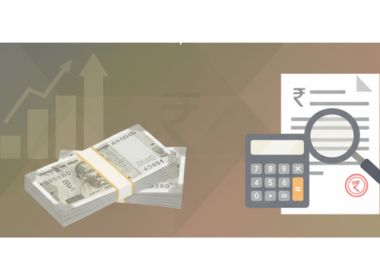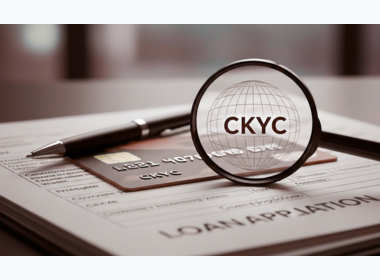Search Suggestions
- Gold Loan
- Money Transfer
- Mutual Funds

Understand Your Credit Score and Report - Q & A
A loan can prove to be a smart financial tool for intelligent financial planning and management. Businesses can leverage their creditworthiness to grow their business by judiciously using various loan options. When you apply for a loan, the first thing a lender does is check your CIBIL score to evaluate your past credit behavior and gauge your creditworthiness. For lenders, checking your CIBIL report means not just evaluating your credit score. It is also a reference point for gathering information about your past credit activity, repayment history, and the status of your credit accounts, among other things.
For borrowers, keeping a regular check on their credit score can make an assessment of their loan eligibility easier. A high CIBIL score gives you an advantage while getting your loan processed, negotiating for better interest rates, and enhancing your loan eligibility.
What is a CIBIL Report?
TransUnion CIBIL Limited, or CIBIL as it is commonly known, is a credit information company that collects financial data regarding loans and credit cards and shares it with its members. It collects information about all borrowers from financial companies and then converts this into a report detailing the credit history of the borrower. A CIBIL Credit Information Report contains your CIBIL score, personal information, contact information, employment information, account information, and inquiry information. We shall learn how to read and understand your CIBIL report in detail.
Credit card issuers and lenders report your repayment details to CIBIL either monthly or quarterly. Banks and NBFCs are subscribers of this data and use it to assess the creditworthiness and also the risks associated with the borrower.
How do I read my CIBIL Report?
When a borrower or lender checks a CIBIL report online, the many sections serve different purposes for the borrower and the lender.
Following are the main sections of a CIBIL Report:
- Credit Score: While reading your CIBIL Report, the credit score is the first section you encounter. CIBIL Score is a three-digit numeric summary of your credit history, generated through the Credit Information Report filed by lenders. A CIR is an individual’s credit payment history across loan types and credit institutions over some time. The CIBIL Credit score ranges from 300-900 and a score above 750 is considered good. A CIR does not contain details of your savings, investments, or fixed deposits.
When checking your CIBIL score online, there may be cases when the score is displayed as NA or NH. This could mean that you either do not have a credit history yet (people who haven’t started earning), have no credit activity in the last few years, or have no credit cards / any other loan exposure. - Personal Information: This section contains all your personal information such as your name, date of birth, gender, and identification numbers such as PAN, passport number, and voter’s number. Please note that this information is uploaded by the lenders. You should go through it very carefully to make sure it is correct.
- Contact Information: This section contains your addresses, phone numbers, and email address. As with the personal information, the contact information here is uploaded by lenders. Be sure to verify the details and report any inaccuracies in the CIBIL report to CIBIL.
- Employment Information: This section of the CIBIL report covers your occupation, and monthly and annual income details as reported by the lenders at the time of loan application.
- Account Information: This is a very important section as your CIBIL score is most influenced by this. It contains information about your credit history, credit card and loan accounts, etc. The account information is presented systematically in a tabulated manner under these heads:
- Name of the lender
- Type of credit facility
- Account number
- Date of opening the account
- Date of last payment
- Loan Amount
- Outstanding balance
- Monthly record of the last 36 months
In addition, the Days Past Due (DPD), i.e. the number of days the payment on an account is due, will also be mentioned.
The types of asset classes in the DPD section are:
- Standard (STD): Payments being made within 90 days.
- Special Mention Account (SMA): Special account created for reporting Standard Accounts moving toward Sub-Standard.
- Sub-Standard (SUB): Payments being made after 90 days.
- Doubtful (DBT): The account has remained Sub-Standard for 12 months.
- Loss (LSS): An account where loss has been identified and remains uncollectible.
- Anything but “000” or “STD” is considered negative by the lender. ‘XXX’ on your DPD for a certain account implies that information for these months has not been reported to CIBIL by the lenders
- Inquiry Information: This section reports the number of inquiries your lenders have made in response to your various credit/loan applications. The details include the lender’s name, type of loan applied for, size of the loan, and date of application.
- Red Box: Sometimes, you can find a red box placed above the ‘account details’ table. This box indicates any dispute associated with the account information along with the date of the dispute. The red box is nothing but an alert message and will be closed once the dispute is settled.
Suggested Read: Importance & Advantages Of Having High Cibil Score
Conclusion
Learning how to read your CIBIL report is not difficult and once you understand how to interpret the report, it can help you tremendously. Also, if you have defaulted on your loan in the past or opted for a loan settlement, your credit score drops significantly. Knowing how to read your CIBIL score can help you improve your credit rating for future loans.
Suggested Read: HOW TO CHECK YOUR CIBIL SCORE ONLINE FOR FREE WITH A PAN CARD?
- Apply PAN Card Online
- Application
- Eligibility
- Documents Required Forms
- Form 49A
- Form 49AA
- Fees
- Correction & Update
- NRI PAN Card
- Tracking
- Penalty
CATEGORIES
OUR SERVICES
-

Credit Score
-

Gold Loan
-

Personal Loan
-

Cibil Score
-

Vehicle Loan
-

Small Business Loan
-

Money Transfer
-

Insurance
-

Mutual Funds
-

SME Loan
-

Corporate Loan
-

NCD
-

PAN Card
-

NPS
-

Custom Offers
-

Digital & Cashless
-

Milligram Rewards
-

Bank Mapping
-

Housing Finance
-

#Big Business Loan
-

#Gold Loan Mela
-

#Kholiye Khushiyon Ki Tijori
-

#Gold Loan At Home
-

#Sunherisoch
RECENT POSTS

Ways to Improve Your Personal Loan Eligibility
Know More
What is Short-Term Capital Gains (STCG) Tax in India?
Know More
What is Professional Tax? Meaning & Importance
Know More
Financial Leverage Explained: Types, Formulas & Examples
Know More
What is Cash Management? Meaning, Objectives & Key Components
Know More
Tax on Gold in India: Everything Buyers Must Know
Know More
What is Equity Capital and Why is it Important for Business Growth
Know More
How to Get a Pre-Approved Personal Loan? Step-by-Step Guide
Know More
Why Are Gold Loans the Best Option When Banks Reject Your Personal Loan?
Know More
Struggling with low CIBIL? Here’s How a Gold Loan Can Still Get You Funded
Know MoreFIN SHORTS

The Best 7 SIF Funds of 2026: A Better Way to Invest
Know More
Gold Price Hits ₹1,40,000: How It Impacts Gold Loan Amounts
Know More
How to Check Loan Number: Step-by-Step Process
Know More
How to Open an SIP Account: Online and Offline Process
Know More
How Do I Apply for MSME Certification Online in India?
Know More
7 Important Reasons to Choose Hallmark Gold When Buying Jewellery
Know More
What Are Co-Pay and Deductibles in Insurance Policies?
Know More
Should You Take a Loan Against Your Mutual Fund or SIP?
Know More
Top 5 Best Mid-Cap Mutual Funds to Watch in 2026
Know More
Are Personal Loans Right for Retirees? Key Points to Consider
Know More
What Happens to a Personal Loan After the Borrower Dies?
Know More
Best Loan Choices for Credit Scores of 580 and Below
Know More- South +91 99469 01212
- North 1800 313 1212





